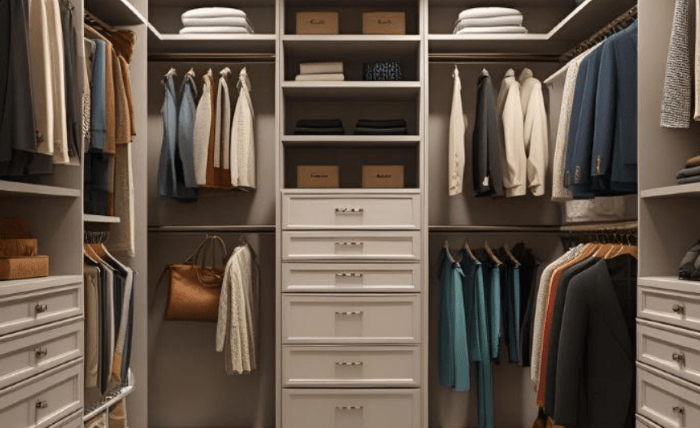When planning a custom closet, aesthetics and layout often take center stage—but if you’re looking to ensure your investment stands the test of time, durability should be a top priority. Not all components age equally. Some parts will wear out quickly if you cut corners, while others can last for decades if chosen wisely.
Here’s where you should focus your budget for long-lasting performance and value in a custom closet project.
1. Durable Core Materials for Shelving and Panels
Shelves, dividers, and cabinet walls form the structural backbone of your closet. Choosing the wrong material here can lead to sagging, warping, and breakdown within a few years—especially in humid environments or under heavy loads.
Best Investment:
Opt for 3/4″ furniture-grade plywood, high-pressure laminate (HPL), or thermo-fused melamine over particle board. These materials are denser, moisture-resistant, and less likely to deform over time.
2. Heavy-Duty Hardware: Drawer Slides and Hinges
Closet hardware bears the brunt of daily use. Cheap drawer slides and hinges can fail quickly, making your space feel clunky and aged even if the structure is intact.
Best Investment:
Install full-extension, soft-close drawer slides and European-style concealed hinges. Premium brands like Blum, Hettich, and Häfele offer products engineered for thousands of open-and-close cycles.
3. Reinforced Hanging Rods and Brackets
Closet rods often hold more weight than expected—from heavy winter coats to densely packed wardrobes. Inadequate brackets or cheap rods can bend or collapse under pressure.
Best Investment:
Use steel or anodized aluminum rods paired with heavy-duty mounting hardware anchored into wall studs. Avoid plastic brackets or hollow rods that can flex under load.
4. Floor-Based Systems for Structural Stability
While wall-hung closet systems may offer sleek design, they rely on the strength of the wall framing—particularly drywall. Over time, weight distribution can lead to failures or sagging.
Best Investment:
Choose floor-mounted cabinetry with adjustable leveling legs and integrated toe-kicks. These systems offer superior load-bearing capacity and long-term stability.
5. Wear-Resistant Finishes
Closets see daily handling, which means surface finishes must be resilient. Scratches, stains, and fading will make even the sturdiest system appear dated and worn.
Best Investment:
Go for durable finishes like thermofoil, textured melamine, or commercial-grade lacquers. These resist scuffs, fingerprints, and UV discoloration far better than cheaper alternatives.
Bonus: Long-Lasting Features Worth Considering
- Integrated LED Lighting: Low-voltage LED strips with motion sensors add functionality without heat buildup or frequent replacements.
- Ventilation Panels: Especially in walk-ins or humid climates, vented doors or louvers prevent musty smells and mildew buildup.
- Adjustable Shelving Systems: Built-in flexibility helps your closet adapt to changing needs over time.
Final Thoughts
A custom closet is more than just storage—it’s a long-term investment in how you organize and live. Prioritizing material quality, structural strength, and dependable hardware will ensure your space stays beautiful and functional for years to come.
When in doubt, spend where the wear shows: hardware, structural components, and finishes. A well-built closet doesn’t just organize your life—it endures with it.

